Havanese Dog Breed
The Havanese breed deeply connects to Cuban heritage, offering insights into the impact of geographic isolation and human interaction on dog breeds. These small yet spirited dogs are known for their silky coats and friendly nature, making them a favorite in cities and suburbs.
They’re small but have prominent personalities, always ready to join in with family fun and social activities. But they also require careful grooming and attention to their health needs. Havanese owners must stay informed about proper coat care and diet to ensure these dogs thrive.
Owning a Havanese is a commitment to their well-being and the joy they add to their owners’ lives. Let’s look at what makes these dogs unique and how best to care for them.
Key Takeaways
- Havanese dogs embody Cuba’s rich culture.
- Grooming and health upkeep ensure their well-being.
- These companions flourish with dedicated care.
The Havanese breed, with roots in Cuban heritage, reflects the influence of location and human relationships on dog breeds. Recognized for their silky coats and amiable demeanor, these dogs are beloved in urban and suburban settings.
Though petite, Havanese possess vibrant personalities and are always up for engaging in family activities. They do, however, need consistent grooming and health care. For these dogs to prosper, owners must prioritize coat maintenance and nutrition.
Committing to a Havanese means nurturing their health and the happiness they bring to their human families. We’ll examine what makes these dogs unique and the optimal ways to care for them.
Quick Facts
The Havanese is a small yet robust toy dog breed originating from Cuba. It is distinguished by its long, silky coat and an average lifespan of 14-16 years, reflecting its generally healthy constitution amidst a few breed-specific health challenges.
Recognized by the American Kennel Club (AKC), the Havanese Dog Breed is prized for its friendly and friendly disposition. Their intelligence and trainability make them well-suited to various living situations, including urban environments.
Regular grooming is essential to maintain their distinctive coat, and they benefit from moderate exercise paired with mental stimulation. Prospective owners should consider the breed’s maintenance requirements and be aware of the potential for hereditary health issues when adopting or purchasing, with prices for puppies ranging significantly.
Havanese Dog Breed Pictures
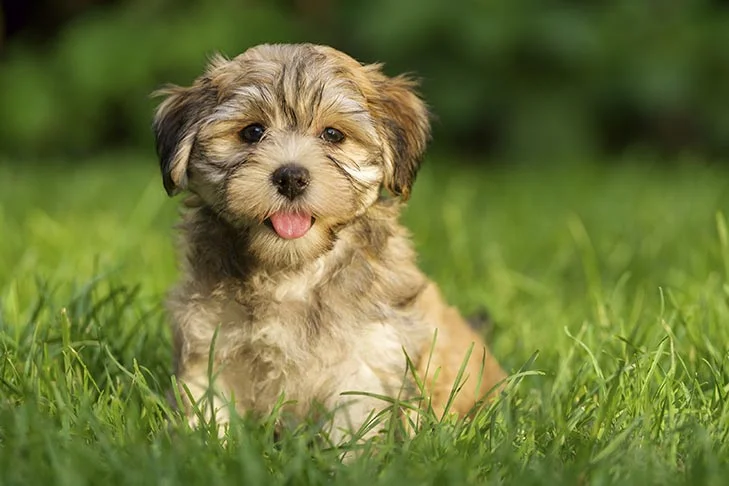
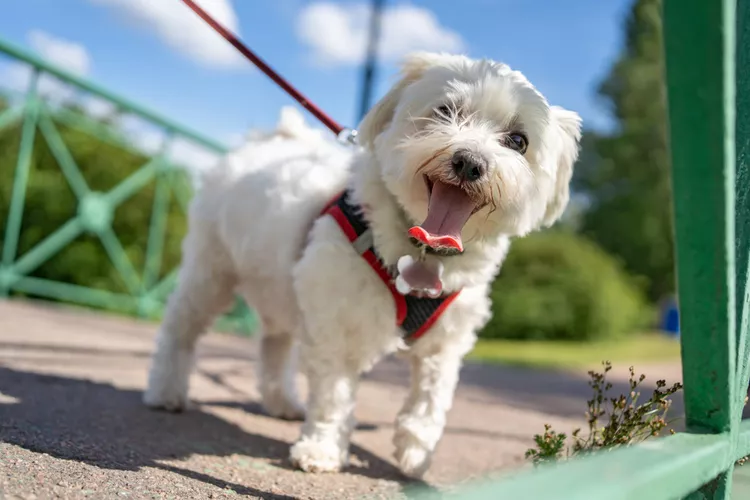
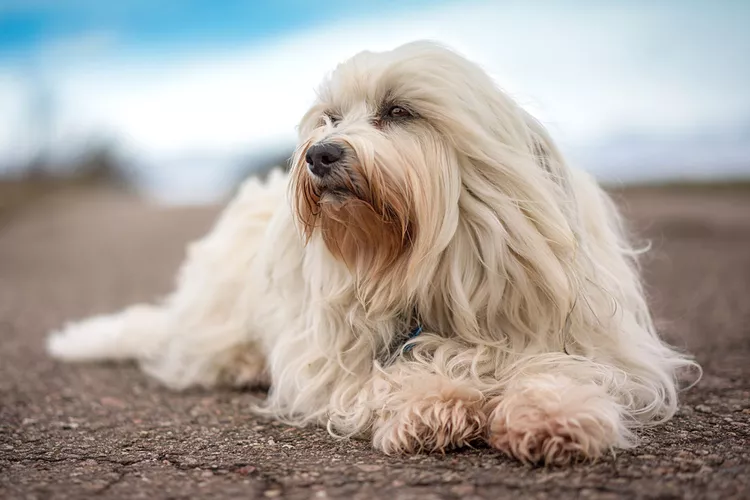
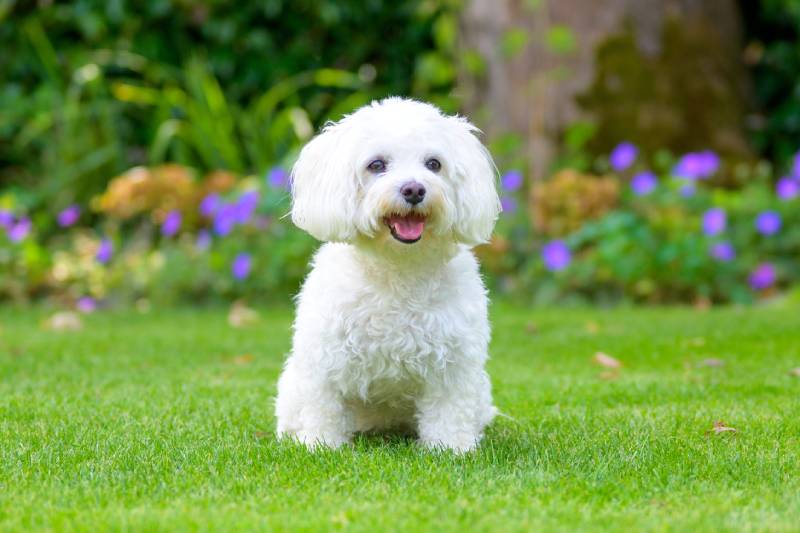
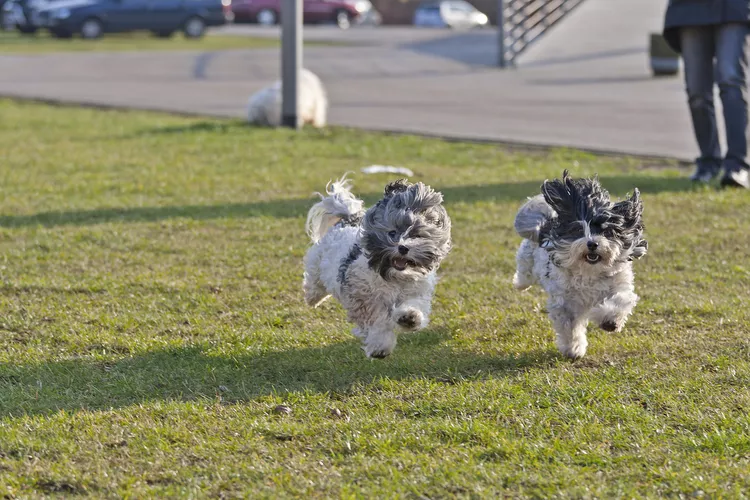
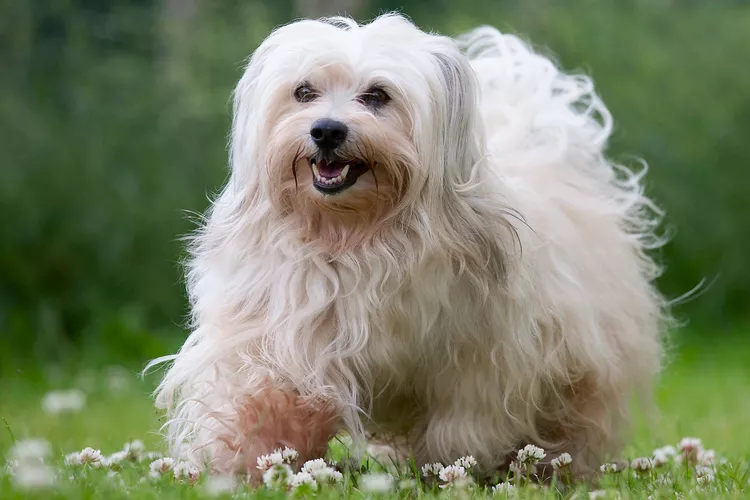
Overview
Originating from the warm climes of Cuba, the Havanese breed is characterized by its distinctive long, silky hair and a temperament that combines friendliness with playful sociability.
This small-sized canine has a notable intelligence and trainability, which, coupled with its affectionate nature, makes it an excellent companion for families, including those with children and other pets.
The breed has a propensity for separation anxiety, necessitating companionship and mental stimulation to thrive.
Despite their moderate exercise needs, Havanese are agile and enjoy engaging in canine sports that test their obedience and agility.
Their health is generally sound, with a lifespan of 13-15 years, yet they require diligent grooming and oral hygiene maintenance.
The Havanese, surviving the turbulence of the Cuban Revolution, proudly stands as the national dog of Cuba.
Key Traits
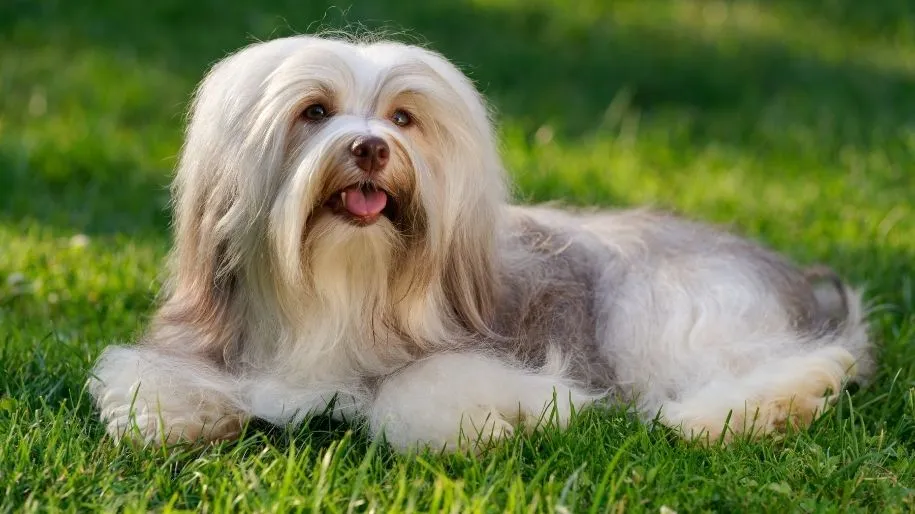
Havanese dogs stand at a modest height of 8.5 to 11.5 inches and weigh between 7 and 13 pounds, presenting a small but sturdy frame. This breed is known for its playful character and ability to top, making it suitable for various home settings.
They are intelligent and easy to train, which, along with their friendly nature, makes them excellent pets for both single owners and families.
A hallmark of the Havanese is their long, flowing coat, which is not only beautiful but also less likely to trigger allergies. However, keeping their coat in top shape requires consistent grooming to avoid tangles.
When discussing traits, these dogs are small, which is great for city dwellers, but care should be taken to handle them gently. Their personality is full of joy and warmth, and they thrive on interaction, though they struggle to be alone for long periods.
Health-wise, they’re primarily robust, but like many breeds, they have some susceptibility to genetic issues, so regular vet visits are essential for early detection of conditions like hip dysplasia or cataracts.
Origins and Ancestry
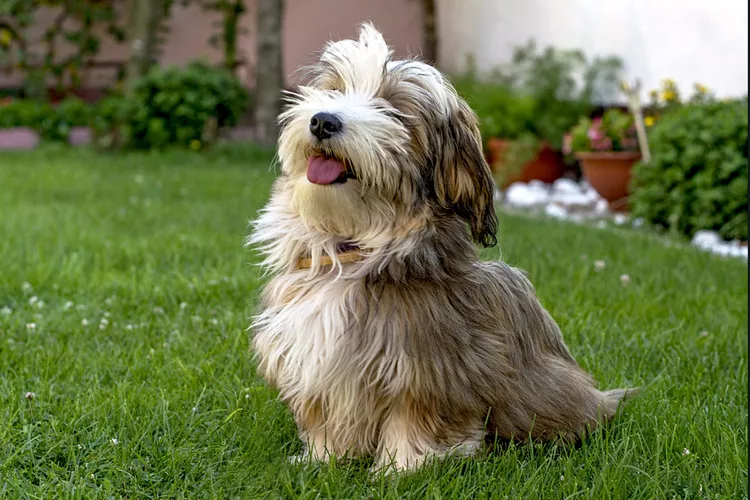
The Havanese dog has a captivating history, originating from Cuba and descended from canines brought over by Spanish sailors. This resilient breed was carefully refined, becoming ideally suited to Cuba’s warm weather and vibrant culture, and it’s now celebrated as the nation’s dog. Their background is historically significant, as are the breed’s lasting attributes.
These small dogs have adapted well to the Cuban heat, evolving from their European forebears. They are directly descended from the extinct Blanquito de la Habana, showcasing their ability to adapt and survive through the ages.
The Havanese were a favorite among Cuba’s wealthy class for their sociable pleasant. Their popularity even extended to European aristocracy, reflecting their worldwide charm. The genetic purity of the Havanese is notable, mainly due to Cuba’s relative isolation.
Ancestral Lineage
The Havanese is Cuba’s only indigenous dog breed, with a history that traces back to the Bichon Tenerife, brought over by Spanish settlers. This breed is part of the Bichon Frise family and has been developed over time to have a distinctive long, silky coat and a friendly nature.
In Cuba, the Havanese were once a favorite among the upper class, flourishing in the warm weather and becoming an integral part of the area’s cultural life.
While they are generally sturdy dogs, Havanese are known to have some health issues that future owners should be aware of.
Their heritage demonstrates how culture and environment can influence the development of dog breeds.
Breed Development
The Havanese dog breed originated from the Bichon Tenerife and has significantly adapted to its Cuban surroundings. Brought over by Spanish settlers, these dogs became highly valued pets among Cuba’s upper class, known for their silky coats, which led to the nickname ‘Havana Silk Dog.’
Studies have shown that Havanese dogs typically enjoy good health and a lifespan of 14-16 years, though they are genetically prone to issues like hip dysplasia, cataracts, and heart murmurs.
The Havanese Club of America is crucial in maintaining the breed’s quality, focusing on standards and health.
The breed is loved for its friendly nature, intelligence, and ease of training, qualities that have earned it recognition by the American Kennel Club as a beloved toy breed.
Historical Significance
Understanding the Havanese’s role in Cuban high society leads naturally to exploring its origins and ancestral lineage, which began with the small and companionable Bichon Tenerife brought to Cuba by Spanish settlers. The Havanese breed, the only dog breed native to Cuba, evolved from these early canines into a distinct type, favored by the Cuban elite for their luxurious coats and friendly nature.
As the Havanese dogs were bred selectively, they developed into a breed known for a spirited personality, loyalty, and hypoallergenic, silky hair that requires regular grooming. Despite their generally robust health, Havanese are susceptible to genetic conditions like progressive retinal atrophy and orthopedic ailments such as Legg-Calvé-Perthes disease and patellar luxation, necessitating conscientious breeding and healthcare practices.
Havanese Breed Stature and Build
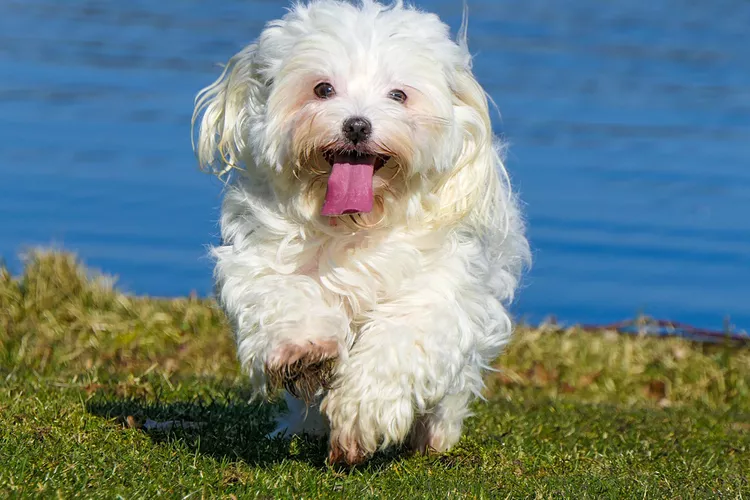
The Havanese breed stands out with its unique shape and size that meet the official standards for this type of dog. These lively animals have a strong yet graceful body, perfect for their energetic nature. They have a height at the shoulder of about 8.5 to 11.5 inches. Their weight makes them small but solid, usually between 7 to 13 pounds.
Their bodies are well-proportioned, slightly longer than tall, giving them a distinctive look. They’re built strong enough to be sturdy yet retain their natural quickness. The breed standards call for a backline that gently slopes from the shoulders to the tail, an essential aspect of their appearance.
Average Height Range
Havanese dogs stand between 8.5 and 11.5 inches tall at the shoulder, which places them firmly in the category of small dog breeds. Their weight ranges from 7 to 13 pounds, making them light but solidly built. Despite their small size, Havanese dogs are not frail; they have a sturdy physique.
Their distinctive backline slopes from shoulder to rear, contributing to their unique profile. These dogs fit well in various home environments and are known for being hypoallergenic, which is excellent for people with allergies.
Weight Classification
Havanese dogs are small but sturdy, with a weight typically ranging from 7 to 13 pounds. These dogs perfectly embody the traits of the toy weight category, not just in their weight but also in their height, which is between 8.5 and 11.5 inches. Despite their small size, Havanese have a strong and muscular build. This makes them handy and challenging, which suits their lively personality.
Owners should watch their Havanese’s weight, as putting on too much can cause health issues. It’s crucial to provide the proper diet and sufficient exercise to keep them at a healthy weight.
The Havanese breed is well-suited for various homes and lifestyles due to its compact size and solid structure.
Body Structure
Havanese dogs are known for their muscular and easy-to-carry bodies. They have a unique body shape that is solid but not fragile, with a top line that curves gently from the shoulders to the hindquarters.
These little dogs have a double coat that might be either straight or curly, which is part of what makes them so recognizable. They need regular brushing to keep their long, silky hair looking good and to avoid tangles.
Havanese stand about 8.5 to 11.5 inches tall and weigh between 7 and 13 pounds. Despite their small size, they are well-balanced and move with a lively step. Their hip joints and other bones help them move quickly and are one reason they do so well in dog sports and other activities.
Physical Proportions
Havanese dogs may be small, but they’re also sturdy and well-built. They stand around 8.5 to 11.5 inches tall and weigh between 7 and 13 pounds. Their unique body shape features a topline that slopes from the shoulder blades to the tailbone.
These little dogs have a thick, silky coat in many colors, including a beautiful dark brown. It’s essential to groom them regularly to keep their coat smooth and free of tangles.
Despite their size, Havanese dogs are surprisingly solid and elegant. They excel in dog sports like agility and obedience, which keep them physically and mentally active. These activities are perfect for the Havanese, eager to learn and enjoy staying engaged.
Breed Standard Stature
The Havanese dog breed is known for its small size and sturdy physique. They have a unique body shape, with a backline that gently slopes from their shoulders to their hindquarters. Their coat is ideal for hot weather, reflecting their Cuban origins.
The American Kennel Club recognizes the Havanese, noting that they stand between 8.5 and 11.5 inches tall and weigh between 7 and 13 pounds.
These dogs are not fragile; they’re built strong enough to match their lively spirit and agility. Their coat is long, soft, slightly wavy, practical, and attractive. This breed’s design is all about proportion, movement, and the ability to adapt.
The Havanese is a well-rounded, active dog and ideally suited for various environments.
Temperament Traits
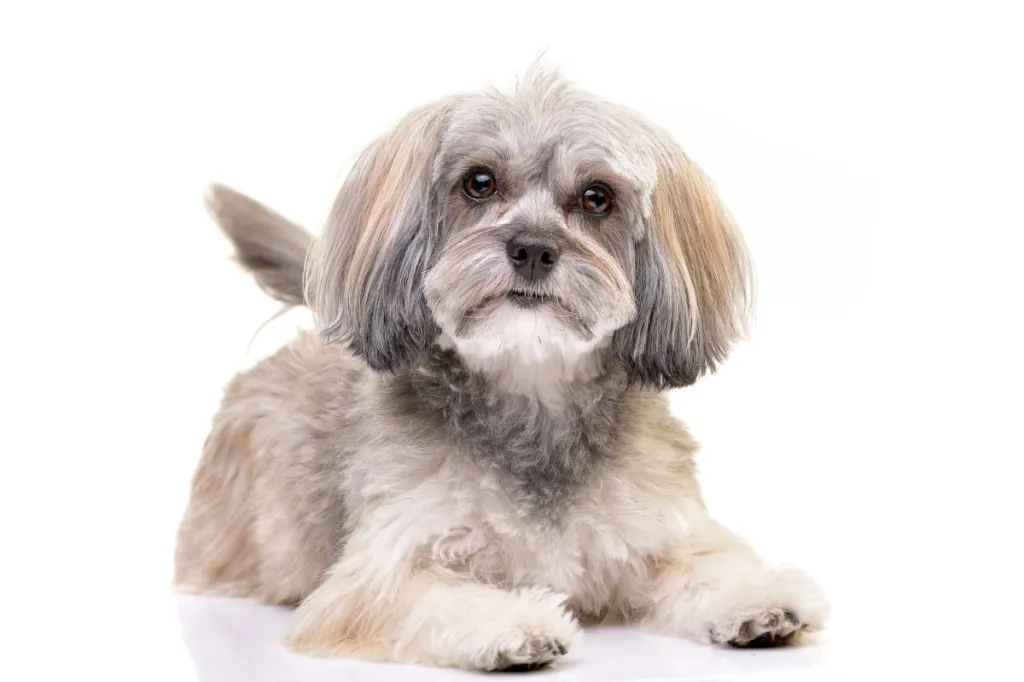
Understanding the temperament traits of the Havanese dog is vital for anyone considering this breed as a pet. These traits shape how the dog interacts with people and other pets, and they’re critical to the dog’s happiness and compatibility with different homes.
The Havanese is known for:
- Their loving nature and desire to create close bonds with their owners.
- Their playful and energetic spirit means they need plenty of fun activities.
These dogs are tuned in to their environment, often reflecting their owner’s mood. They’re adaptable, doing well in small apartments and larger homes with space to roam. Havanese dogs are intelligent and take well to training, showing excellent problem-solving skills.
Affectionate Companion Nature
Renowned for their endearing disposition, Havanese dogs exhibit remarkable affection and devotion towards their owners, fostering a deep bond that epitomizes their companionable nature.
Family dogs are particularly noted for their amiable interaction with children, ensuring their behavior is consistently gentle with children and considerate of their youthful companions. Their eagerness to please and friendly temperament make them inherently good with children and other pets.
The Havanese breed, characterized by steadfast loyalty, thrives on close contact with family members and may display separation anxiety when deprived of regular companionship. Notably, they do not have a propensity for excessive barking, contributing to their adaptability to various living situations.
Playfulness and Energy
Havanese dogs are known for their lively spirit and playful nature. These small but energetic dogs enjoy interactive play and activities that keep them moving. They need regular walks and play sessions to stay healthy in body and mind. Without these, they might get bored and not use their energy well.
Active and Agile
Havanese dogs are also great at dog sports because they are agile and respond well to rewarding training. It’s essential to keep their daily routine varied to keep their natural enthusiasm up and ensure they stay happy and healthy.
Sensitivity Levels
Havanese dogs are known for their lively nature and deep emotional connections with their owners. They are incredibly loyal and show plenty of affection. If these dogs spend too much time alone, they might get separation anxiety because they’re used to being around people. Keeping them in an environment where they can interact often is crucial.
Starting socialization early helps them get used to different situations and builds their emotional strength. When training, positive feedback works well with their eagerness to please, keeping them from getting stressed. Taking care of their mental health is essential because of their sensitive nature, and they need consistent, kind treatment.
Adaptability to Environment
Havanese dogs are pretty adaptable when it comes to where they live. They can be happy in a small apartment or a large house, which makes them a flexible choice for many people. These dogs are friendly and enjoy being around people, which makes them great pets in any home. They are bright and can be trained easily, mainly if you use positive methods like treats and praise.
These dogs don’t need much exercise – just daily walks and playtime to keep them happy. This is good for people with different kinds of schedules or activity levels. Havanese dogs usually don’t bark too much, which is a plus if you live close to others. They can be okay when left alone for a bit, but they do like having people around. To keep them healthy, you should brush their coat often and care for their teeth, no matter where you live.
Intelligence and Trainability
Havanese dogs are known for their sharp minds and are highly receptive to training. Their intellectual abilities allow them to understand and perform intricate instructions, so they excel in agility and obedience contests. These traits also make them great family pets because they can quickly pick up on house rules and daily patterns.
These dogs are eager to please and can focus and remember, which makes training them a breeze. Using rewards and praise works wonders with them, creating a positive training environment. That’s why Havanese dogs are perfect for first-time and seasoned owners who want a bright and friendly companion.
Wellness Considerations
In considering the optimal wellness of Havanese dogs, it is imperative to focus on preventative health measures and balanced lifestyle practices. The importance of health screenings cannot be overstated, as they enable early detection of hereditary conditions expected in the breed. A balanced diet tailored to their nutritional needs and a consistent exercise regimen contribute significantly to their physical and mental health.
Comprehensive genetic testing to identify potential hereditary issues. It formulated dietary plans that cater to the breed’s energy requirements.
They structured exercise routines to enhance cardiovascular fitness. Enrichment activities that stimulate cognitive function. Proactive veterinary care for early intervention and disease management.
Havanese Health Screening Importance
Regular health screenings are crucial for spotting and managing conditions like hip dysplasia, patellar luxation, and heart issues early on in Havanese dogs. These checkups are essential to stopping potential health problems before they become serious, as they can catch things like cataracts and hearing loss that might not be immediately obvious. Early detection through screenings can also uncover conditions such as portosystemic shunt, which could severely affect a Havanese’s well-being and life expectancy if ignored.
When looking for a new pet, choosing a breeder who provides health clearances for their dogs is wise. This step can help reduce the chances of hereditary health issues. Taking active steps, like regular health checkups, is vital to preventing ear infections. This is a common issue for dogs with floppy ears. Staying on top of these health concerns is essential for maintaining Havanese dogs’ overall health and happiness.
Diet Nutritional Balance
A balanced diet is vital for a healthy Havanese dog. To keep these dogs in top shape and full of vitality, they need a diet that includes the right mix of protein, fat, carbs, vitamins, and minerals. These elements are essential for maintaining good health and preventing illnesses.
Since Havanese dogs are small, they can gain weight quickly, so it’s essential to eat. Feeding them is necessary; smaller meals can more often prevent low blood sugar, a common issue in small breeds. Always make sure they have water available to support their digestive system.
For advice tailored to your Havanese, talk to a vet who can create a personalized diet plan.
Exercise Regularity Benefits
Regular physical activity is vital for the health of Havanese dogs. It keeps their energy levels up and supports their health and behavior. Havanese dogs need to stay active with daily walks and playful interactions. These activities keep their bodies and minds engaged.
Regular exercise helps prevent weight gain and supports a healthy heart. It also helps these dogs socialize and behave better. A regular exercise schedule can reduce anxiety and hyperactivity in Havanese dogs. Havanese should stick to a daily exercise plan for their health and happiness.
Owning a Havanese: Essential Maintenance Needs
Caring for a Havanese involves several crucial steps to keep them healthy and happy. It’s important to address everything from their coat to diet and exercise. Here are some key areas where a Havanese will need your careful attention:
Grooming Essentials: Regular brushing is necessary to avoid mats in their fur, and it’s beneficial to have a professional groomer keep their coat in top condition.
Nutritional Needs: It’s vital to create a diet plan that meets the specific energy requirements of a Havanese.
Exercise Routine: Planned activities are essential to maintain heart health and muscle strength.
Health Monitoring: Consistent vet checkups help catch any health issues early and keep your dog on track developmentally.
Training Basics: Regular training helps with mental stimulation and teaches them how to interact socially.
In providing your Havanese the care they need, you ensure their well-being and strengthen your bond. A well-groomed, well-fed, active, and well-trained Havanese is a joy. So, keep up with these care practices, and your Havanese will thrive.
Grooming Routine Essentials
A steady grooming routine tailored to their specific coat needs is crucial to keep a Havanese looking its best. Their coat is soft and tends to get knotty, so brushing it at least twice weekly with the right brush to combat shedding and tangles is essential. Focusing on areas where knots form quickly, like under the legs and near the collar, is vital.
Regular ear checks should be part of your Havanese’s grooming to avoid infections, which dogs with floppy ears can often get. Keeping their ears clean and dry and checking them constantly is critical to ensuring your dog stays happy and healthy.
Dietary Requirements
Ensuring your Havanese dog eats right is critical to their health. They need a balanced diet full of nutrients to stay energetic and healthy. The best choice is quality, age-appropriate dog food that meets their nutritional requirements.
Since Havanese dogs are small and can quickly become overweight, it’s essential to manage their food intake to prevent obesity, which can lead to health issues. Always provide plenty of fresh water to keep them hydrated, which is crucial for their well-being.
Work with a vet to create a specific feeding plan for your Havanese, particularly if they have special health needs or food sensitivities.
Exercise Regimen
A balanced diet is essential for the health and well-being of Havanese dogs, but so is a regular exercise plan. These dogs need daily walks and playful activities to stay fit.
Providing toys that challenge their minds and regular training to follow commands is critical to keep them from getting bored and keep their minds sharp.
Dog sports like agility and obedience events are great ways for Havanese to burn off energy and improve their skills. These kinds of activities can also help stop bad habits like too much barking, which can come from having too much energy or not enough mental challenges.
Havanese owners must dedicate time to developing an exercise routine that cares for all aspects of their dog’s health.
Health Check Priorities
Caring for a Havanese dog involves a holistic strategy that starts with regular grooming. Their unique coats are long and silky, needing frequent brushing to stop knots and tangles. Brushing their teeth daily with dog-specific toothpaste to prevent gum disease is also critical.
Regular vet visits are vital for keeping up with vaccinations and spotting health problems early. This breed is prone to conditions like progressive retinal atrophy and Legg-Calvé-Perthes disease. Keeping them active is essential to avoid weight gain and keep their minds sharp.
It’s vital to watch out for elbow dysplasia, a joint problem in these dogs. Following the American Club’s advice for the breed helps take proactive steps for their care.
Behavioral Training Fundamentals
Regular health exams and grooming are critical to a Havanese’s health, but teaching good behavior is just as vital. This training supports their mental health and helps them get along in society.
Starting training early is best for Havanese puppies because their brains are most adaptable, making it easier for them to learn. These dogs are naturally friendly, so using rewards to encourage good behavior works well.
Training should focus on helping them get along with others, follow commands, and learn good dog manners. A well-trained Havanese is a joy to have around, fitting in well in different settings and efficiently handling new situations.
Nutritional Requirements
The dietary needs of Havanese dogs must account for their small size and high energy levels. Their diet must support their well-being and activity. Their food should include the right mix of nutrients to meet their unique needs.
A well-rounded diet is crucial in getting all the necessary nutrients for these dogs. Keeping their meals appropriately sized helps maintain a healthy weight. Customized meal plans can address any specific health issues they might have.
Nutrients that support skin and coat health should be included in their diet. A consistent feeding schedule helps keep their metabolism regular.
Balanced Diet Essentials
A healthy diet for Havanese canines should include the right balance of proteins, fats, and carbohydrates. These nutrients and necessary vitamins and minerals are crucial for their health and well-being.
Dog owners must provide their pets quality protein from chicken, turkey, salmon, and eggs. These help with muscle strength, healing, and a robust immune system.
It’s also essential to add a variety of fruits, vegetables, and whole grains to their diet. This ensures they get vitamins A, B, C, and E and minerals like calcium, iron, and zinc. These nutrients support their overall health.
Controlling how much food your Havanese eats is critical to avoiding overweight or underweight issues. This means paying attention to their age, their activity, and general health.
Lastly, making sure your Havanese always has fresh water available is vital. Water helps with digestion and makes certain nutrients are properly absorbed. It’s a fundamental part of a dog’s diet needs.
Portion Control Guidelines
Monitoring the food portions for your Havanese is crucial for their health. Keeping track of how much your dog eats is critical to a healthy diet. Dog food brands often suggest how much to feed your pet, but it’s just a starting point. When deciding on meal portions, it’s essential to consider your dog’s age, weight, how active they are, and their unique metabolic rate. A measuring cup is the best tool to ensure you’re giving the correct amount, which helps avoid weight issues. Watch your Havanese’s shape and size to know if their diet needs changing. Talk to a vet about creating a diet plan that meets your dog’s health needs.
Healthy Eating Habits for Havanese Dogs
Regarding feeding your Havanese, it’s not just about the quantity of food but also the quality. Choose a high-quality dog food brand that suits your pet’s dietary requirements. If you notice your dog gaining or losing too much weight, it might be time to adjust their portions. Don’t be afraid to ask your vet for advice on the best food options and portion sizes for your furry companion. Regular vet checkups and a good diet will keep your Havanese in shape.
Special Dietary Considerations
Creating a healthy diet for Havanese dogs requires attention to their health needs. This includes choosing foods that help maintain joint, eye, and heart health. A well-planned diet helps reduce the chance of hip dysplasia, cataracts, and heart murmurs. It’s essential to follow the nutritional standards the Association of American Feed Control Officials (AAFCO) sets to ensure that Havanese dogs get the proper nutrients.
To support joint health, look for foods that have glucosamine and chondroitin. Vitamins C and E, potent antioxidants, are essential to protect against eye problems like cataracts. Foods rich in Omega-3 fatty acids are suitable for the heart. For their teeth, diets tailored to dental health are vital in preventing other health issues.
